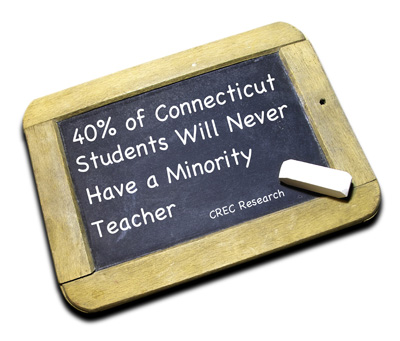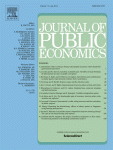UConn is One of 10 Colleges Selected for Program to Recruit Minority Male Teachers
/According to data collected by the American Association of Colleges for Teacher Education (AACTE), 80 percent of PK-12 teachers nationwide are white, middle-class women, and more than 40 percent of public schools have no teachers of color. Studies by the National Center for Education Statistics report that 2 percent of public school teachers are black males and fewer are Hispanic males.
Forty percent of Connecticut public school students will never have a teacher who is not white, according to the Capitol Region Education Council (CREC), noting that "although minority students account  for over a third of Connecticut's public school students, only 7 percent of the state's teachers and 2 percent of the administrators in Connecticut's public schools are minorities."
for over a third of Connecticut's public school students, only 7 percent of the state's teachers and 2 percent of the administrators in Connecticut's public schools are minorities."
If those numbers are to change and reflect a more diverse teacher population, recruitment of teacher candidates will be a pivotal component, education officials point out.
With that objective in mind, the University of Connecticut has been selected as one of 10 universities nationwide to participate in a program that seeks to increase the diversity of the teacher candidate pool. The Neag School of Education at UConn as part of the Networked Improvement Community (NIC), an AACTE initiative aimed at recruiting more black and Hispanic men into teacher preparation programs.
UConn, a member of the 800-member AACTE, was selected to participate in the organization’s first Networked Improvement Community project, which seeks to increase the diversity of the nation’s teacher candidate pool. The other institutions selected are Boston University, California State University Fullerton, Florida Atlantic University, MidAmerica Nazarene University, Northeastern Illinois University, University of Arkansas at Little Rock, University of Saint Thomas, Western Kentucky University, and William Paterson University of New Jersey.
Saroja Barnes, senior director for professional issues at AACTE, says universities were selected for the program based on great diversity within the school districts and community they serve, alignment of the project’s goals to the existing strategic initiatives and mission of the institution, and strategic attention to enrollment trends.
According to a study last year by the American Association of Colleges for Teacher Education, 82 percent of candidates who received bachelor’s degrees in education in 2009-10 and 2010-11 were white. By contrast, census figures show that close to half of all children under 5 in 2008 were members of a racial or ethnic minority, The New York Times reported.
In the 2013 study, AACTE surveyed close to 700 colleges and universities that train just under two-thirds of new teachers, finding that few candidates graduate with credentials to teach math, science, special education or English as a second language, all subjects that experts say are increasingly important to prepare students for jobs and to meet the demands of an increasingly diverse student population.
A report by the Center for American Progress, Increasing Teacher Diversity: Strategies to Improve the Teacher Workforce indicated in 2011 that “increasing the number of teachers of color is not only a matter of a philosophical commitment to diversity in career opportunities.
Teachers of color provide real-life examples to minority students of future career paths. In this way, increasing the number of current teachers of color may be instrumental to increasing the number of future teachers of color. And while there are effective teachers of many races, teachers of color have demonstrated success in increasing academic achievement for engaging students of similar backgrounds.” Adds CREC, "It is important that all children have access to positive role models from a variety of backgrounds in order to be successful in an increasingly global society."
Thomas DeFranco, Dean of the Neag School, says goals for expanding the diversity of teacher preparation within the Neag School of Education align closely with the objectives of AACTE. Those efforts, according to UConn Today, include the creation of the Teacher Prep Academy in Bulkeley High School in Hartford; designation of an academic advisor specifically charged with recruiting minority students into the Integrated Bachelor’s/Master’s Program; and providing a variety of scholarship opportunities, such as the Connecticut State Minority Teacher Incentive Grants.
More than 50 member institutions in 25 states applied to be a part of the inaugural NIC and 10 were selected following a rigorous review by the AACTE Committee on Professional Preparation and Accountability.



 2.
2.



 from its Quest and Third Age Initiative programs to help rebuild the new Jonathan's Dream, working with the Mandell JCC.. The project is also supported by
from its Quest and Third Age Initiative programs to help rebuild the new Jonathan's Dream, working with the Mandell JCC.. The project is also supported by 



 her end of the scale, the states with the smallest percentage of union members are Utah, Mississippi, South Carolina, Arkansas and North Carolina, all under 4 percent union members, according to data reported by Bloomberg.com.
her end of the scale, the states with the smallest percentage of union members are Utah, Mississippi, South Carolina, Arkansas and North Carolina, all under 4 percent union members, according to data reported by Bloomberg.com.


 Adriana S. Cordis is an Assistant Professor of Accounting at Winthrop University in South Carolina. Her areas of teaching expertise include managerial and cost accounting, and her research focuses on capital-market and transfer-pricing issues. She also has a long-standing interest in corruption from a public policy perspective. Patrick L. Warren is an Assistant Professor in the Department of Economics at Clemson University. His research has focused on decision making in public sector organizations, auditing and political accountability.
Adriana S. Cordis is an Assistant Professor of Accounting at Winthrop University in South Carolina. Her areas of teaching expertise include managerial and cost accounting, and her research focuses on capital-market and transfer-pricing issues. She also has a long-standing interest in corruption from a public policy perspective. Patrick L. Warren is an Assistant Professor in the Department of Economics at Clemson University. His research has focused on decision making in public sector organizations, auditing and political accountability. tates according to their tendency to produce the highest or lowest monthly energy bills.
The analysis points out that “lower prices don’t always equate with lower costs, as consumption is a key determinant in the total amount of an energy bill.” Connecticut’s monthly energy cost for consumers, according to the analysis, is $404, ranking the state 49th out of 51 (the 50 states plus the District of Columbia). Mississippi’s total monthly cost paid by consumers averages $414, while Hawaii’s is $451.
tates according to their tendency to produce the highest or lowest monthly energy bills.
The analysis points out that “lower prices don’t always equate with lower costs, as consumption is a key determinant in the total amount of an energy bill.” Connecticut’s monthly energy cost for consumers, according to the analysis, is $404, ranking the state 49th out of 51 (the 50 states plus the District of Columbia). Mississippi’s total monthly cost paid by consumers averages $414, while Hawaii’s is $451. the highest in the nation. (see breakdown below)
the highest in the nation. (see breakdown below)




























